
Calorie balance and macronutrient amounts
Hi everyone, in today’s article I will be going over total nutrition: a guide to maximizing body composition changes. This article (the first of a 3 part series) will focus on calorie balance and macronutrient amounts. You will want to read this article if you plan to make positive body composition changes. I mean building muscle and losing fat. I will break it down for you so you don’t need to spin your wheels any longer. You can start to see some progress! I think these upcoming articles will fit very well with one of my prior articles, a clean bulking meal plan guide. Here is the link to the article in case you missed it https://www.theavgguysnutritionandexerciseguide.org/nutrition/clean-bulk-meal-plan-guide/. I would also like to include a link to a website where I gathered some of the information I am sharing with you today:https://rpstrength.com/. They offer some of the best information out there on nutrition and training. I can’t recommend them enough. So without further ado, let’s get into the meat and potatoes of macronutrients!
The 5 core principles for body composition changes
When looking to build muscle or lose fat there are some principles that we must adhere to, to see progress. Without following these core science backed principles your progress will be hindered. You will be disappointed with the results you will get. There are 5 core principles or areas we must follow or focus on to elicit the body composition changes we wish to acquire. These include:
- Calorie balance.
- Macro nutrient amounts.
- Nutrient timing.
- Food composition.
- Hydration and supplements.
Each one of these principles are ranked from the most important (calorie balance) to the least important (though still important to a degree) (hydration and supplements). Each one plays its part in getting us closer to our body composition goals. Note I didn’t say health goals as health and fitness goals are actually 2 different things. You can think of the diet principles or pillars as a pyramid, with calorie balance being the base. It is the core foundation of the pyramid, holding everything else together. While hydration and supplements occupy the highest point on the pyramid.
Calorie balance and macronutrients matter.
If you were to adhere to calorie balance and macronutrient amounts you may get 80% of the results you can expect to achieve. Whereas if you adhered to food composition really well but you were lacking in the area of calorie balance, your not going very far. Calorie balance ranks ahead of food composition. Yes if you eat healthy food which contain plenty of vitamins, minerals and fiber you will acquire a higher level of health. But if you still over-consume on calories/not adhering to your caloric requirements you will gain weight regardless of how healthy your food is. This is not good if your goal is to lose weight!
Calorie Balance
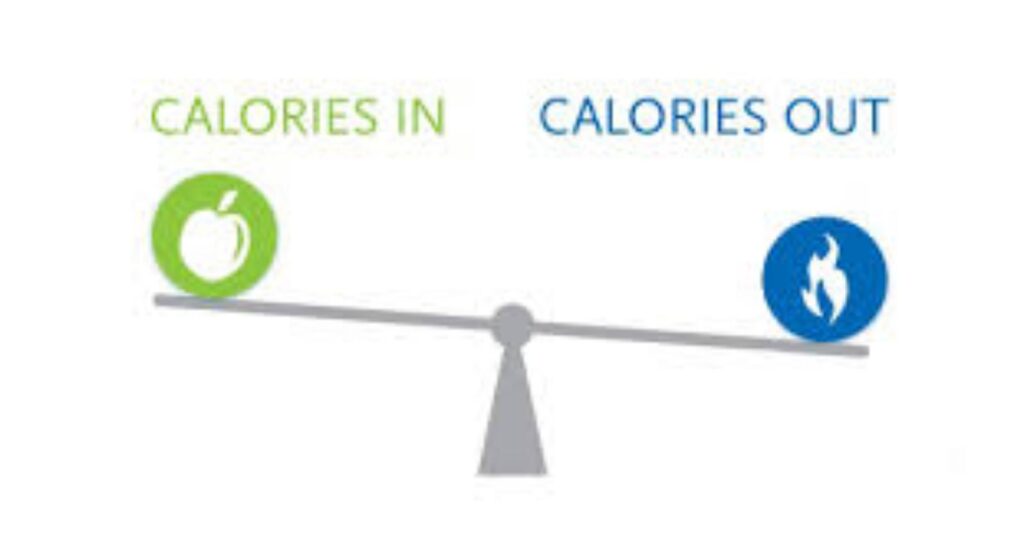
Calorie balance means how many calories you eat. You can manipulate your caloric balance to gain weight, lose weight or maintain your weight. If you want to gain weight you would eat what is called a hypercaloric diet. This is where you consume more calories than your body needs to function healthy and normally. If you want to lose weight you eat a hypocaloric diet where you consume less calories than your body burns. If you want to maintain your weight, you eat a isocaloric diet where you match your body’s daily calorie needs. Each one offers some distinct advantages when paired with resistance training to elicit the change we want to bring about.
Fuel your body for improved performance and recovery.
A hypercaloric or isocaloric diet offer us more in terms of sport performance and recovery. We have a surplus or just enough calories and energy to support our training and recovery needs after training. Eating less calories than your body burns hinders both of these to a degree. Depending how great of a deficit you place yourself in, will dictate how much of a loss in performance and lack of recovery abilities you will notice. Muscle and strength loss can also be observed if we don’t consume macronutrients in the correct proportions.
Fueling exercise
Our body uses the calories we consume as energy or blood glucose which is stored within the muscle. Our body actually has a bit of a system for this. The food we most recently consume is readily used by the body for exercise and various tasks. After our body has exhausted this source of fuel, it moves onto the next in line, stored muscle glycogen. This is made up of all the carbohydrates we have been consuming in the previous days and hours . If we don’t fuel our bodies with a sufficient intake of carbohydrates we won’t see glycogen stores being filled optimally. You will notice a drop in performance, both mental and physical. Both blood glucose and glycogen give our bodies energy quickly.
The body chooses the most efficient energy source.
On the opposite end of the ladder are your body tissues. Such as muscle tissue and fat which take time to break down to be used for energy. Stored body fat can provide us with fuel for motor tasks but it is not an efficient fuel source. Fat is better suited for low intensity exercise. We cannot readily use it for sports performance and other activities. These require large exertions of energy in a short space of time. The body always prefers carbohydrates for energy use. When we eat less calories than our bodies need, we are using up our stored fat as an energy source. We are not providing our bodies with enough carbohydrates to keep glycogen stores topped up. The body is just using what it has at hand to provide us with energy. When this happens we lose body fat and become leaner, which is the goal of dieting. We purposely consume less calories to induce fat loss.
Recovery
The calories we consume are also used for recovery purposes. They directly influence how much and how quickly we can recover from exercise. When we exercise, we are in someway damaging our muscle tissues. They need to recover and grow back more resilient after exercise and calories help with this recovery process.
The body is a survival machine first and foremost.
When we are in a hypocaloric state, the body favors energy for running basic bodily functions. Energy is at a premium. We may not even see a full recovery of body tissues as there is just enough energy to carry out basic bodily functions. The body is a survival machine and will look to prolong it’s lifespan before repairing and growing extra muscle. The opposite is also true. If we give ourselves enough or more than enough calories daily we will see our recovery abilities improve. Our performance will be much improved due to more available energy present in the body. The perfect combination for growing new muscle tissue.
Calories and body composition changes
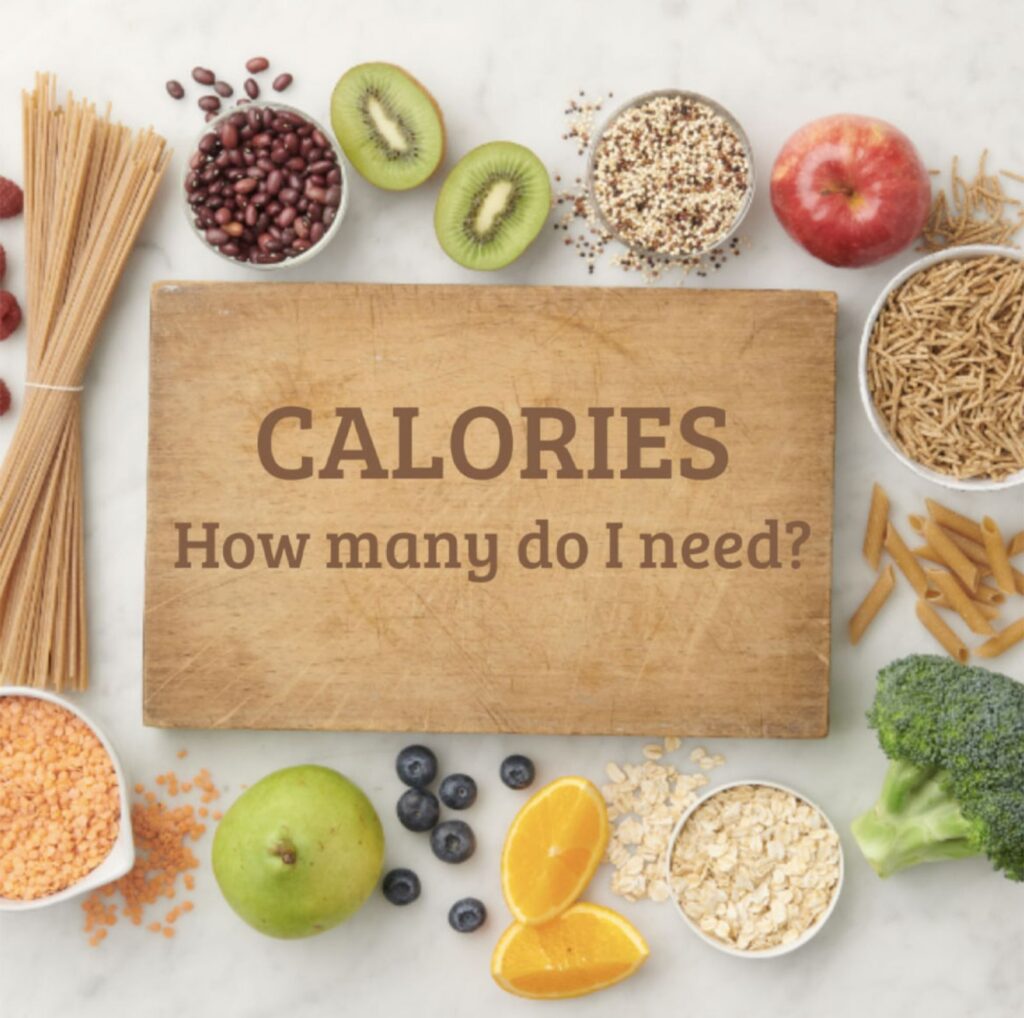
If we wish to gain muscle, lose body fat or maintain our weight, the amount of calories we consume has a huge bearing on the outcome. Picking the goal of building more muscle, this is an energy-intensive process. Muscle is metabolically costly, meaning it takes more calories to manufacture new muscle and maintain the muscle once we have it. When you think about it, the body’s number 1 goal is to survive. It can adapt to any environment to increase it’s chances of survival.
Sometimes muscle is a nice to have but not always needed.
In the past (though our bodies still behave in a lot of the same ways) muscle may be useful for fighting big and strong animals or other hostile human beings. Though it is useful in this situation, muscle takes a lot of effort on the body’s part to maintain. If we just consumed the amount of calories our body is accustomed to consuming with our natural body weight, we would actually lose the muscle we have built. If we needed to run for long distances to find food, muscle would actually be a disadvantage. The body would soon try to get rid of this extra muscle to increase our chances of reaching the food or shelter before anything or anyone else. Survival is what the body knows.
Manufacturing muscle and losing fat
Manufacturing new muscle tissue and losing fat are actually two very different things. Bu they both require work and effort. Building muscle requires a surplus of calories, adequate protein,nutrients, and consistent resistance training to see progress .Fat loss requires us to either expend more energy or consume fewer calories while consuming enough protein and resistance training each week to hold onto the muscle mass we have built. Though these are two different processes, it is possible to see both happen at the same time in particular situations. These include those new to resistance training and dieting and people taking performance-enhancing drugs. Lets briefly explain each.
Dieting
Dieting is when you start to pay attention to total daily calories consumed,dividing your macronutrients into correct amounts for either muscle building or losing fat and food timing. The space or time between 1 meal and another. When you are new to dieting in general (manipulating calories and macros for body composition changes) and training you can gain muscle in an isocaloric state or maintenance eating. In a hypercaloric state you can build muscle and strength and simultaneously lose fat. Usually,, this is not possible. In a hypocaloric state you can lose fat but also increase strength and build muscle.
The older the training age the smarter methods you must use.
If I tried eating an isocaloric diet being an intermediate lifter (a few years of weight training) I would MAYBE gain a little bit of strength. But I’m not going to gain muscle on a hypocaloric diet. On a hypercaloric diet it is just not physiologically possible for me to lose fat as I’m consuming more calories than I need. Remember caloric balance. The effects can last up to 7 months for those new to each. After this you will need to focus on one or the other to see progress. Lastly there are performing enhancing drugs. If you take them for the first time even on a small dose you will see new progress. This process also slows down after a while and to see the same or more progress you must take increasingly larger and larger doses of drugs.
Calorie demand factors
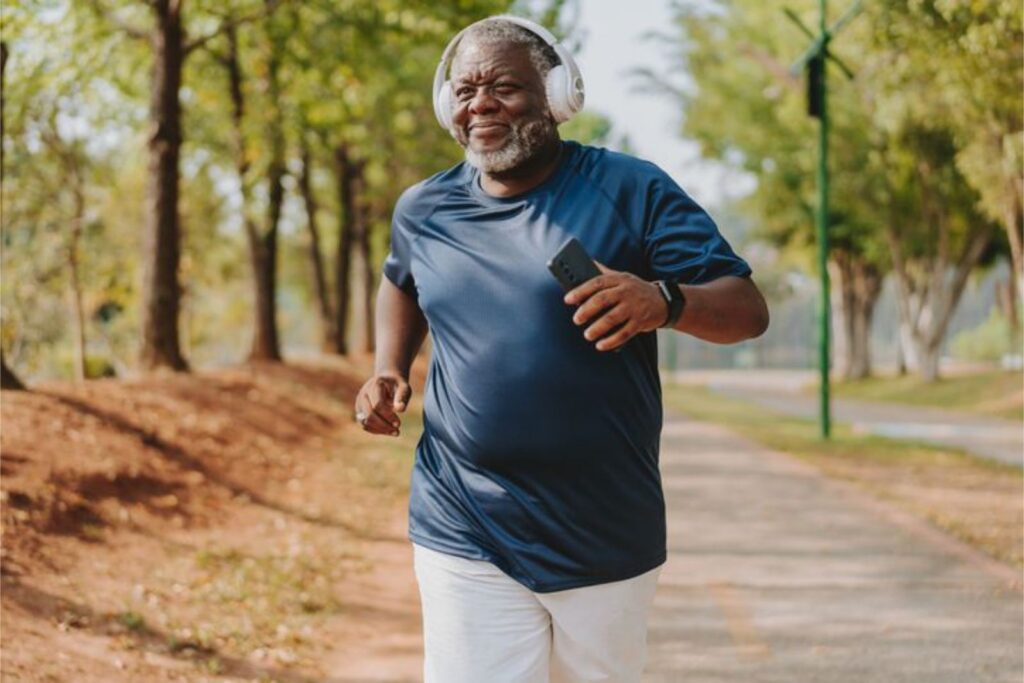
- Height and body size.
Tall people actually burn more energy compared to people shorter in stature because they have more surface area to keep warm. The same can be said for people with more muscle mass. They have larger muscles then your average David or Joe. So they need more calories as their metabolism increases the larger their muscles become.
2. NEAT (Non-exercise activity thermogenesis).
These are all of the movements and activities we carry out during the day which don’t include formal activity. These include walking, working, studying and unconscious bodily movements like moving your hands when speaking or fidgeting. Some people burn a lot of calories from NEAT such as your average “hardgainer” who finds it hard to gain weight. They just have a higher basal metabolic rate.
3. Exercise and training.
The more exercise you do or the more intense it is, the more calories your body will burn to keep up with the demands of this exercise. For example if you did a light jog around the block this will burn less calories compared to a full 90 minute game of soccer playing at a professional level.
4. Stress.
Actually stress can lead to weight loss, but stress can trigger overeating in some people where they over-consume on calories. I have experienced this. The food tastes good, it helps to soothe you in a way. So you start to overeat when stressed to make yourself feel better or distract yourself from the source of the stress. Stress can also increase body weight via water retention. You can even burn more calories while stressed as your fight or flight pathways are activated.
5. Recovery demands.
Just like training burns more calories, the recovery process also requires extra calories as your body carries out the processes needed to recover from exercise induced muscle damage.
Genetic metabolic rate, body fat percentage, drugs and sex
6. Genetic metabolic rate.
Some people are more efficient at burning calories and converting them into energy. Metabolism also plays a role in how easy it is for some people to lose weight across a dieting phase. We all know those people who are naturally slim and those that are prone to holding onto weight easier. The first type of people most likely have a higher basal metabolic rate which makes them burn more calories compared to the other type of people. Making it seem like they can “eat whatever they want and not get fat.”
7. Body fat percentage.
People who have higher levels of muscle mass burn a little bit more calories compared to people who have less muscle and more fat mass. If you have a higher body-fat percentage you can burn more calories because your movement is not as efficient. Thermoregulation requires more calories too when in warm weather as it’s more difficult to keep your body temperature stable.
8. Drugs.
Caffeine can increase your metabolic rate compared to not consuming any caffeine. Making it useful during dieting phases to help us lose body fat.
9. Sex.
Men burn more calories than women because of having more muscle mass, hormonal differences and having a larger body mass. Even without these factors men will still burn more calories compared to women.
So now you know a little bit more about calorie balance and what factors influence our daily caloric needs. Now let’s move onto our next and second most important diet priority: macronutrients.
Macronutrients
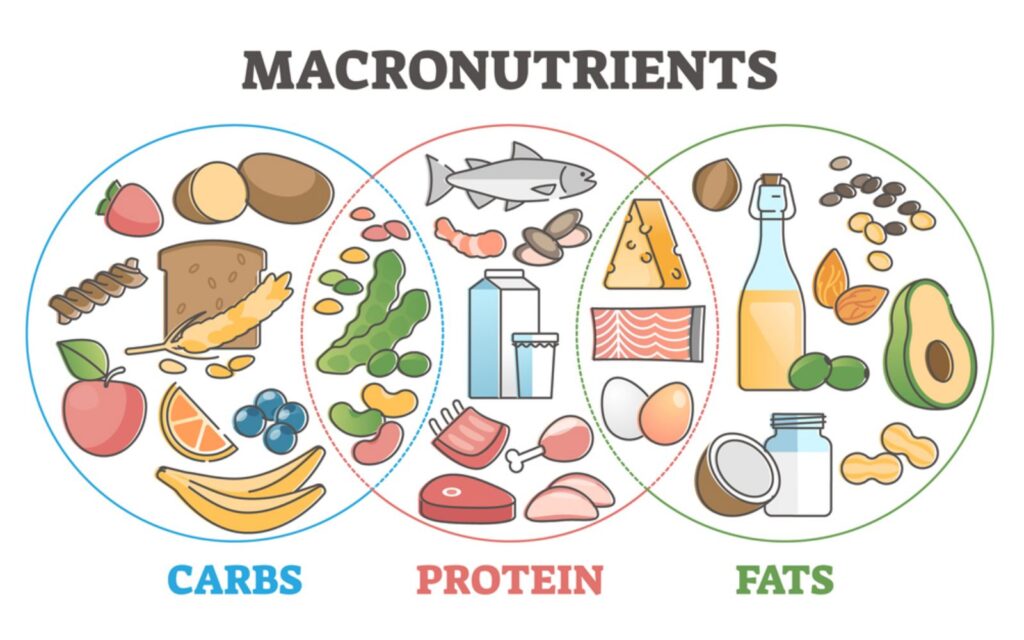
Macronutrients consist of protein, carbohydrates and fats. Consuming each of these in particular amounts will lead to either great or poor results. This could include dieting to lose fat (while at the same time maintaining your muscle mass), building more muscle and strength (building extra muscle mass and not just gaining fat mass), or just maintaining your body weight. They account for 80% of the possible results you can acquire from dieting. If you are a lean individual you can work off of your body weight for calculating macros. If over 30% body fat, using lean body mass is more appropriate.
The calorie constraint hypothesis
This principle dictates how many calories you can consume while staying within your calorie target or caloric needs. When you change how much of one macro you consume, you alter the amount of another macronutrient you consume. For example while eating an isocaloric diet or maintaining your body weight, If you didn’t adjust one macro when consuming more of another, you would overshoot your calorie target and put yourself into a surplus of calories. Now your diet is hyper-caloric, whether this was intentionally or not. Each macro contains a certain amount of calories with fat being the most calorific with 9kcals per gram. Carbs and protein being 4kcals per gram respectively.
Protein
Human proteins are made up of 20 amino acids. The body produces 11, the other 9 need to be acquired from outside sources such as the food and liquid you consume. Not all of the protein we ingest is used for muscle building purposes. Protein turnover describes when we lose some protein due to sweating, body fluids or in urine. Protein can also be burned for energy if there is a shortage of carbs or fat. We must consume enough protein to combat both of these and support skeletal muscles. Protein is also broken down for daily bodily processes.
If we want to build more muscle mass, we need to supply our bodies with enough protein which is anabolic and anti-catabolic. If we are in a catabolic state, our body will readily use protein as a source of energy instead of the preferred carbohydrates to support bodily functions. This is common to see while dieting to lose weight and why consuming enough protein is super important to maintain our muscle mass. But also consuming enough carbohydrates to save our ingested protein so it does its job correctly of feeding our muscle cells with amino acids. Instead of being used for fuel! Protein helps supply us with a better quality of hemoglobin, which is used to transport blood to our muscles. Hemoglobin helps with endurance and strengthens bones and joints.
Recommended daily protein intake for body composition changes
Notice I said “for body composition changes”. The following guidelines are not for general health where one does not need to consume as much protein. When manufacturing new muscle tissue you need more amino acids to build extra muscle. It won’t happen magically though this would be a nice outcome. Everybody would be jacked with just a little training and some protein! Recommended daily protein doses lie between 0.8-2g per ib of body weight.
Carbohydrates make the engine tick.
You could eat as much as 2g per ib of body weight and be perfectly safe if you don’t have pre-exisiting kidney problems. Though you could, it doesn’t mean you should. Once we hit the recommended daily target and we hit our minimum fat intake, all of our other calories should come from carbohydrates. Why? Because carbs fuel training, so we can train harder meaning more muscle is gained or preserved. It also helps more with recovery compared to fat and keeps our glycogen stores topped up, so we are ready for the next bout of exercise.
Team sport athletes
If you play a team sport like rugby or American football which require players to carry a lot of muscle mass a good minimum to aim for is 0.8g per ib of body weight. If you play a position such as a winger in rugby you may not get through as much work compared to a prop or back rower. So replacing some of your carbohydrate calories with protein is not such a bad idea to help with recovery. Protein also helps with feelings of satiety, so you don’t over consume on calories, keeping your body fat levels low. Important for a winger or full back in rugby.
Strength and power sport athletes
If your an Olympic weightlifter, strongman or powerlifter a good minimum is 1g per ib of body weight. This can be increased to 2g per ib of body weight while keeping fats and carbs at their minimum. Though I would favor a lower protein intake and extra carbohydrates to fuel training. Carbohydrates will always be the preferred source of fuel for exercise. They do a lot better job compared to protein or fats. Once hitting your recommended minimum daily protein intake for building muscle, there aren’t any other benefits of consuming more protein in terms of building muscle or strength.
Needs on a hypercaloric diet
0.7g per ib of body weight is a good minimum. As we are consuming extra calories we are not going to be in a anabolic condition. Though this amount is not optimal for building extra muscle. No more than 1.5g per ib of body weight should be consumed. We want to leave enough room for carbohydrates which are anabolic and lead to insulin secretion. A good amount to aim for is 1g per ib of body weight when looking to build muscle mass.
Needs on a hypocaloric diet
1g per ib of bodweight is enough to preserve muscle mass. Though you could eat a little bit more, like 1.2g if this helps with better diet adherence. Remember protein helps with feelings of satiety, so the chances of over-consuming on calories are reduced. You should not eat over 1.5g as you need enough room for carbs which will help fuel you for high volume training. This is needed to help preserve your muscle mass while ingesting less calories. Eating less calories than your body needs places you in a state of catabolism. The body does not have calories as readily available for recovery processes and more.
Carbohydrates
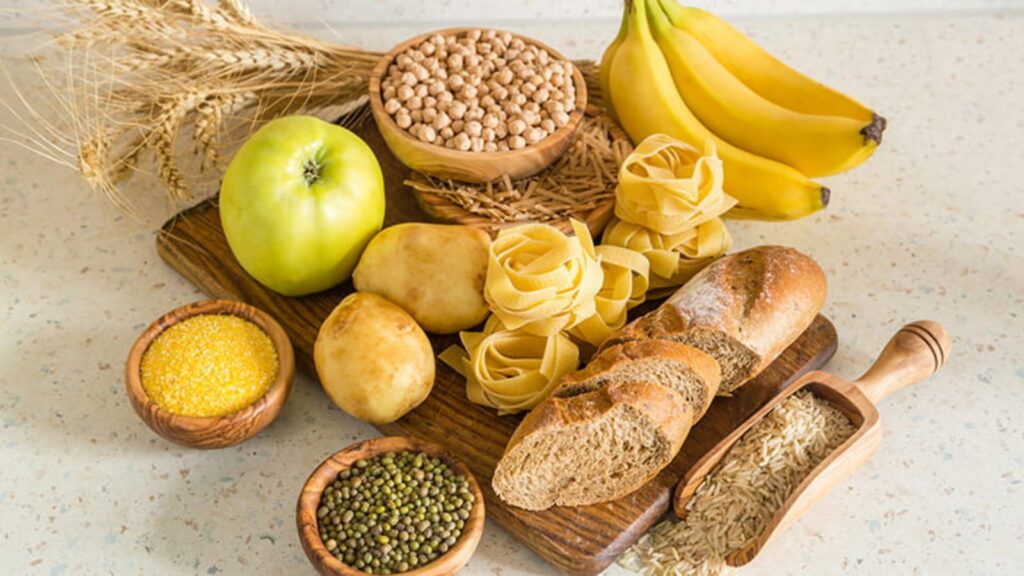
Carbohydrates are made up of monosaccharides, polysaccharides and disaccharides. All of them can be converted into glucose and are used:
- Transported to cells for immediate energy use.
- Transported to blood cells to circulate and provide energy to cells that don’t store a lot of fuel on their own and prefer to use glucose.
- Can be sent to the liver and stored away as glycogen for use later on. When blood glucose levels become low, glycogen is released from the liver and converts into glucose to counteract this.
- Transported to skeletal muscles to be stored as glycogen for storage. When we run or jog which are two examples of high intensity exercises. Our muscles rely on stored glycogen to complete power contractions.
There are different types of carbohydrates too which can be fast acting, meaning they convert into blood glucose quickly. The other variety are slow acting, they take a while to be absorbed into the body. We see a more consistent absorption over a longer time period. The types of carbohydrates we can ingest are simple carbohydrates like fructose which is slow acting. Starch is a complex carbohydrate but fast acting. Some people say you should eat more complex carbs as simple carbs can be “more addicting”. This has proven to be untrue and are just as good for your health as complex carbohydrates.
Minimum, maximum and recommended carbohydrate intake.
Carbohydrates are not needed for survival. But foods such as fruits, vegetables and whole grains which contain vitamins, minerals, fiber and phytochemicals which are needed by the body also contain carbohydrates. So we end up consuming carbohydrates anyway. Which is not such a bad thing..
Carbohydrates for body enhancement and composition changes.
The nervous system primarily uses glucose for the normal functioning of the brain. So we don’t want to dramatically drop carbohydrate intake. Normal blood glucose levels maintain mental acuity, force production and aid in fatigue prevention. Well fed brain cells means quicker reaction times, better decision making and higher levels of motivation.
Carbohydrates are important for performance.
When blood glucose levels are low, central nervous system function worsens leading to fewer motor units being recruited. That’s less speed, power, strength and poorer performance in the gym or while playing sports. Not what we want if we wish to gain or maintain muscle mass! Carbohydrates stored as muscle glycogen and then converted to glucose are the preferred source of fuel for muscle contractions over 30%. For heavier exertions like lifting a 1-3 repetition squat, the body mainly uses the ATP system. But also somewhat relies on stored muscle glycogen after phosphate creatine stores are exhausted.
Prevents muscle loss and promotes anabolism.
When we have carbohydrates stored as muscle glycogen present in our muscle cells, the body will use this for fuel. Instead of using ingested protein and muscle mass. This mean’s we save our ingested protein for building new muscle tissue. We hold onto muscle more easily while under hypo-caloric conditions. This is why it is very important to keep carbohydrate intake high while dieting for fat loss to avoid losing muscle mass. When consuming less calories than we burn the body will look to find whatever source of fuel it can to keep itself fueled. Because carbohydrates are the preferred fuel source the body will always use it first before protein or fat. Remember this fact while dieting for fat loss.
An anabolic environment.
After ingesting carbs our blood insulin levels are elevated which is very anabolic. This creates the right environment to grow more muscle tissue. Protein and fat don’t elevate insulin levels much, so carbs are crucial if you want to grow the most muscle possible. We know the 1 hour post-workout window is when the body is more insulin sensitive. This is why it is recommended to consume a low-fat but high carbohydrate with adequate protein meal after training. The body will start to absorb all of those carbohydrates begin the recovery process and start to grow more muscle tissue. This is if we have trained with enough volume,intensity and ingested an adequate amount of protein.
Needs for strength and power athletes.
A good minimum to aim for is 1g per ib of body weight. An average amount to aim for could be 1.5g. But you could go all the way up to 2g per ib of body weight if your completing a lot of strength, power and speed training sessions. If your energy needs are not so high, then stick to the minimum or average recommended amounts.
Needs on a hypocaloric diet.
No less than 1g per ib of body weight should be consumed while paired with resistance training. If you consume less, that means you can’t train with as high of volumes or intensities. Both needed to maintain muscle mass. Lower carbohydrate intakes are fine on rest days but on training days you need to be consuming enough. Optimal carbohydrate intake at the end of a fat loss diet is when we have both of our protein and fat intake at the minimum. Minimum protein, I mean the minimum amount to grow or maintain new muscle tissue. The minimum fat, enough to maintain a healthy functioning body. The rest of the calories should be made up of carbohydrates.
Needs on a hypercaloric diet.
Consume no less than 1g per ib of body weight. Consuming less carbohydrate and more fats and proteins (after you have hit your recommended daily minimum protein intake for building new muscle tissue), means gaining muscle will be that much harder. To maximize muscle gain, look to consume as many carbohydrates as possible. Also, hit your recommended daily protein intake and minimum daily fat intake. Carbohydrates are what is going to fuel your training so you can provide a better stimulus to your body to grow more muscle tissue. In simple terms that means lifting heavier weights and training with higher volumes over the weeks, months, and years of training.
Fats
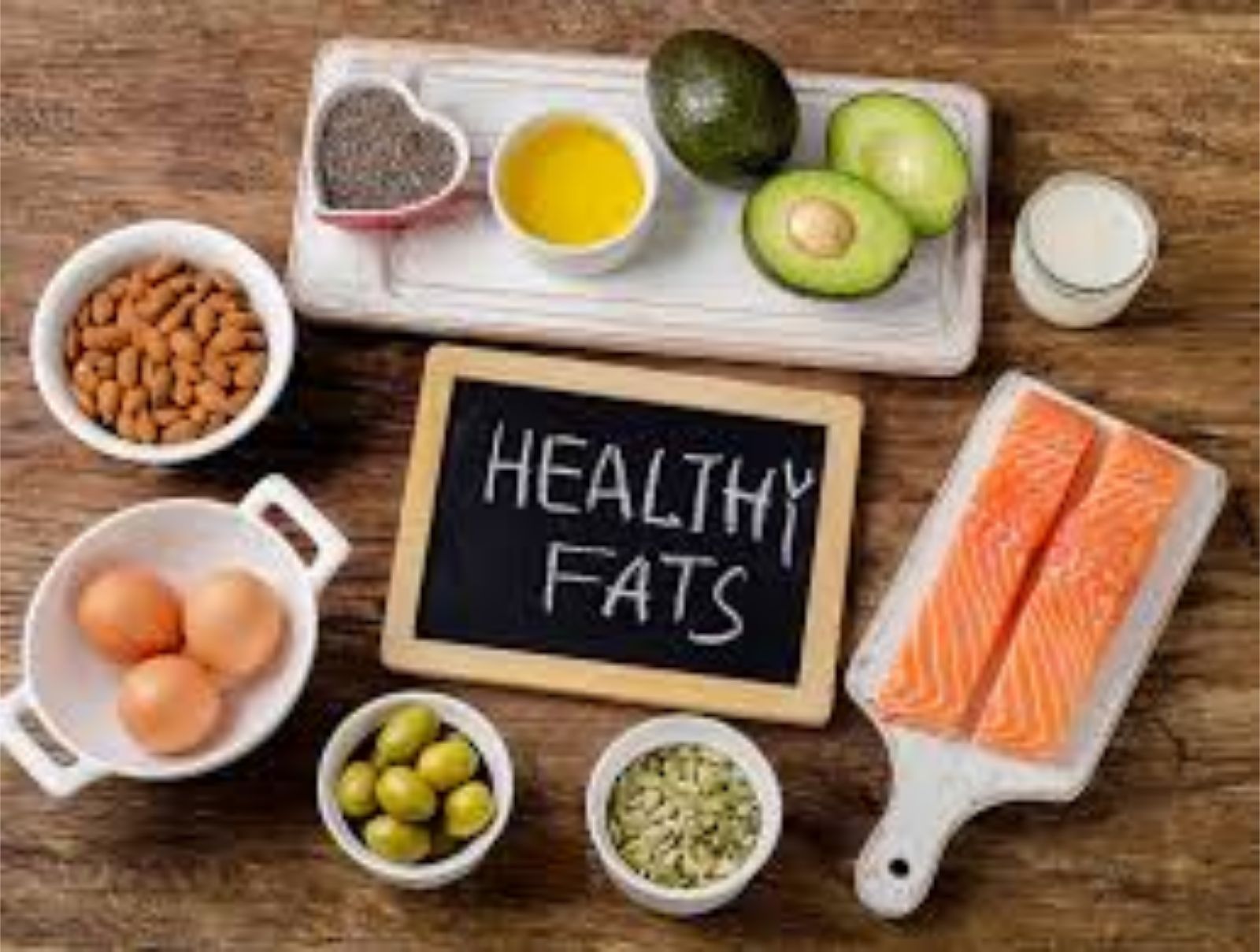
Fat is an important macronutrient, though maybe not as important as protein and carbohydrates are for building or maintaining muscle tissue. But for general health they are essential. If your normal health is not sorted how do you think you will lose fat or gain muscle? Ingested fat helps with testosterone, estrogen, and prostaglandin production. If you have more testosterone and estrogen in your body, muscle gain is easier, and holding onto muscle is more possible while under hypocaloric conditions. Performance adaptions are increased.
Fats are one cog in the wheel.
Fatty acids are also needed to help with the inflammatory process. This is important as after training, we experience disruption and inflammation in the muscles exercised. Yes the inflammatory process is a necessary part of the muscle building process. If we can bring inflammation down quicker we can train sooner which equals higher training volumes completed during the microcycle or week of training and more muscle grown.
Needs on a hypocaloric diet.
Fats are easy to consume which make them ideal on a hypercaloric diet when your struggling to hit your caloric target. But because carbohydrates are anti-catabolic and because they are protein sparring and provide fuel for high volume and intensity training, fats should be consumed at their minimum for health. While the rest of your calories after protein should come from carbohydrates to keep up with training needs in the gym.
Needs on a hypercaloric diet.
On a hypercaloric diet, we are consuming more calories than usual to provide the raw materials for muscle gain and enough energy to train at high volumes and a high intensity. If you are struggling to hit your calorie target at the end of a massing phase, consuming more fats is a solid option. Why? They are highly palatable meaning they are easy to eat. They contain more than twice as many calories as protein or carbohydrates. A great combination if you wish to eat more food! But remember..consuming more fats should only be done if you are really having a hard time consuming extra calories. Carbohydrates are what are going to really help you build muscle. Try to keep your fats at the daily minimum levels for as long as you can while massing.
Hierarchy of macronutrients
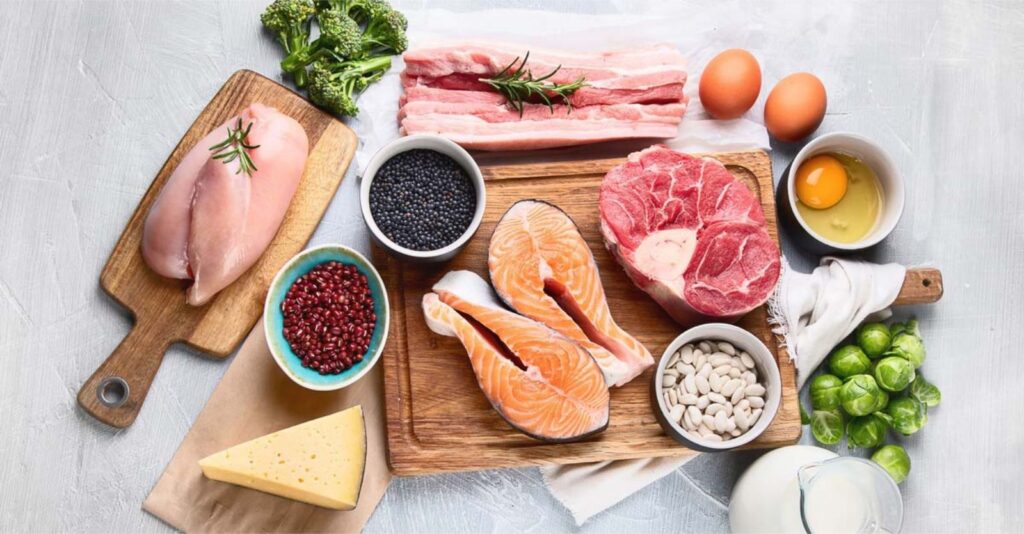
Just to summarize some of the points that came up during the article surrounding macronutrients. Protein ingested in adequate amounts is the most important both for building new muscle tissue and for preserving preexisting muscle tissue. Next we have carbohydrates. They will help fuel your training during a hypercaloric or hypocaloric diet. On a hypercaloric diet they will allow you to train with greater intensity, higher volumes and recover faster from training. So you can train more frequently.
Who wants to build more muscle? Hear me out.
Carbohydrates also raise blood insulin levels which is very anabolic and conducive to building more muscle. Consuming a large quantity of carbohydrates within the 1 hour window after training and in the hours following training is a killer combination. The body is insulin sensitive after training and carbs help to raise insulin levels. Keep your fat intake low during the first 1 or 2 meals after training for the faster absorption of carbohydrates and protein.
Carbohydrates during a hypocaloric diet
During a hypocaloric diet, carbohydrates will allow you to keep training at high enough volumes and intensities. This helps you to maintain your muscle mass and strength as best as you can. As mentioned, while eating fewer calories, the body’s ability to recover is not as efficient. We don’t have as much energy which can mean decreases in gym performance. We want to train as hard and with enough volumes as we possibly can to hold onto muscle during this time. Remember weight training is the stimulus your giving your body which effectively says “I want to build more muscle” or “I want to hold onto this muscle.”
Fat is necessary.
On the last step of the stairs we have fats. They won’t exactly help you to build a lot of muscle on there own. Though they are useful to eat when aiming to hit large calorie targets to continue gaining on a hypercaloric diet. Not all fats are equal and some should be eaten more than others for better health. Others such as trans fats, artificially made by humans don’t offer much health benefits. Their consumption should be limited. Fats are important for general health and they promote the production of testosterone among other things which is very anabolic. I bet you have heard of bodybuilders taking injectible testosterone. It’s because it’s a huge helper when on the quest to grow more muscle.

So there you have it guys. That’s the first part of this 3 part series. Now you should know more about macronutrients and how to use them for different body composition goals. To get the best results you can! In the next article I will be going over nutrient timing and food composition. Both are important areas in themselves. If you found this article useful please share with family and friends so we can make the people in this world bigger and stronger individuals. Until the next one!
